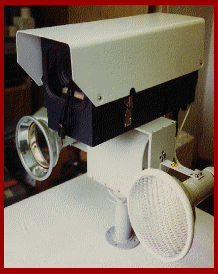| ||||||||||||||||||||||||||||
Welcome to the | ||||||||||||||||||||||||||||
 | ||||||||||||||||||||||||||||
 | ||||||||||||||||||||||||||||
One classic mistake (made by most installers) is the belief that you have to strap the Infra Red lamp right next to the camera, even if it’s looking at a target 100 metres away! The general rule is, the further away the target, the greater the light output needed to achieve an acceptable picture quality. This is actually a basic law of physics, which is described by engineers as the 'inverse square' law. Put simply, each time you double the distance from the target,you will actually need four times the amount of light, simply to achieve the same level of illumination. This is one of the reasons why you sometimes see two IR lamps strapped to a pan and tilt head (there are of course other reasons). Far better to keep the camera fixed on its view, and locate the lamp much closer to the area being monitored - you'll get a better quality of illumination, using a smaller lamp, and at a greatly reduced (purchase and running) cost. In fact in some situations, it is far preferable to bounce the light off a decent sized reflector, such as a building or clump of conifer trees, rather than pointing the lamp directly at the target. The Tungsten filament IR lamps are available in a range of light outputs, although it's important to remember that the 'wattage' of a bulb refers to its 'white light' output, and not the eventual Infra Red emitted through the filter. They are generally available as:- Short range (>35 metres) 20 Watt, 50W & 75W There are in fact two main types of filter available:- 'Dyed in the Mass' glass which is the same colour throughout, and is actually the most expensive to manufacture; and Dichroic which has a specific coating placed on it to filter out most if not all of the unwanted frequencies. | ||||||||||||||||||||||||||||
 | ||||||||||||||||||||||||||||
IMPORTANT: No material may be reproduced, copied or redistributed from this site, © doktorjon.co.uk 2004 - 2008 Homepage...:...Gateway...:...Technical Gateway....:....Quickfind Index....:....Equipment Directory | ||||||||||||||||||||||||||||

